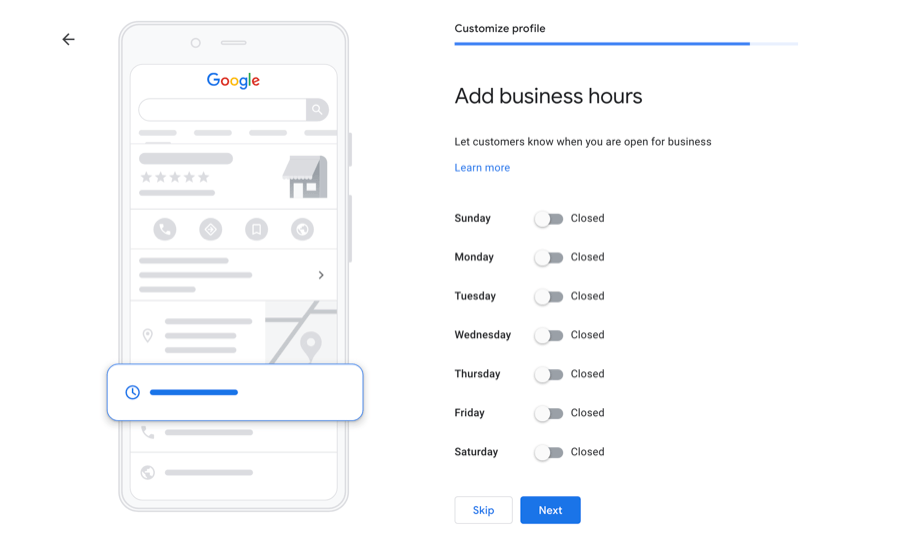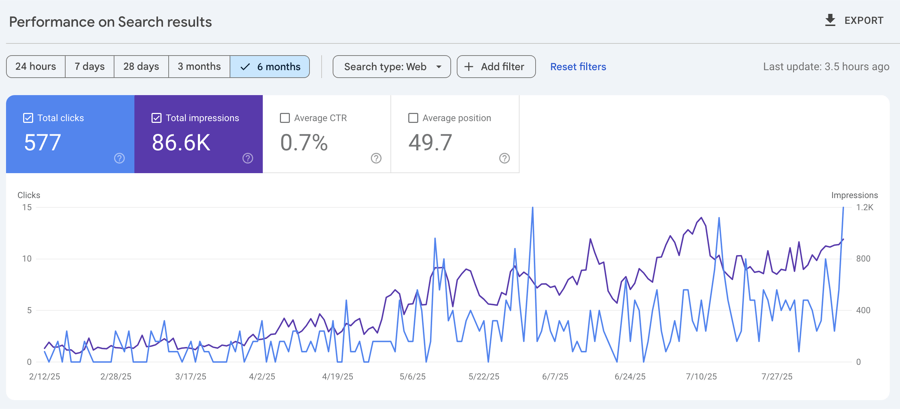Travel Lead Generation in Australia — SEO, GBP & CRO for Tour Operators and Rental Agencies

Last Updated on 25 September 2025 by Dorian Menard
You want more bookings without paying a tax to OTAs. Here’s the straight answer: build a site architecture that mirrors how Aussies and foreigners plan trips, dominate your Google Business Profile, publish destination-led content that answers real trip questions, translate your content for foreign searchers, and fix conversion leaks on your forms and booking pages.
Execute this sequence properly and you’ll drive qualified leads for tour operators, rental companies, and attractions across Australia — with Perth as a repeatable local model.
Here is an overview of how we approach SEO and lead generation campaigns for our travel clients. Keep on reading for an in-depth guide focused on our backyard WA, but packed with tips you can easily replicate Straya-wide!
Why travel lead generation in Australia isn’t like other niches
Travel intent is messy, seasonal, and highly local. People don’t search “book a tour” on day one. They start their search with long-tail, top of the funnel queries such as “10‑day Perth to Exmouth itinerary”, “family‑friendly campervan hire tips”, “karijini national park” or “Margaret River in August worth it?”
Only later do they look for a booking button. If you only chase bottom‑funnel keywords, you’ll starve and literally stand no chance against top governmental or national travel sites dominating page 1 for those highly competitive terms.
Key realities:
- Seasonality and geography matter. School holidays and state events drive sharp spikes. Queries change by city and route.
- Aggregators dominate broad terms. Your wins come from long‑tail, location‑rich, itinerary/problem‑solving content tied to clean local landing pages and a fully optimised Google Business Profile.
- Speed and trust move the needle. Slow pages, lack of social proof and vague pricing kill bookings.
- Australia attracts a lot of foreigners. Help them by providing content in their language.
Site architecture that ranks nationally and converts locally
Let’s break it down. You always need to start with website architecture and need a structure that matches how Australians/foreigners plan trips and how Google evaluates topical authority.

Build this stack:
- Pillar pages (national intent)
- Examples: Australian Road Trip Guide; SEO for Travel Websites (this post); Campervan Hire Australia (service pillar); Best beaches to visit in WA (blog pillar).
- Purpose: capture broad intent, internally link to regions, cities, services.
- Regional clusters (state/route intent)
- Examples: WA road trips; Great Ocean Road campervan planning; Kimberley tours.
- Purpose: win long‑tail and itinerary queries; feed authority to the pillar.
- City/service pages (local intent, convert)
- Examples: Campervan hire Perth; Tours Sydney; Margaret River wine tour transport; 4WD hire Broome.
- Purpose: drive bookings with clear CTAs, pricing, FAQs, reviews, and GBP alignment.
- Supporting assets
- FAQs, pricing transparency pages, insurance/one‑way policy pages, packing lists, downloadable maps. Think EEAT and trust signals here.
Execution rules:
- One primary topic per page. No Franken‑pages targeting five cities on one URL.
- Internal links in both directions. Pillar → cluster → city; city → cluster → pillar. Use descriptive anchors like “Perth campervan hire guide” and “WA road trip itineraries”.
- Publish velocity beats perfection. Ship the pillar and two clusters in month one; add weekly content. Depth + momentum wins travel SEO Australia.
We always start by publishing the pillar posts/pages first in order for them to start ageing. This helps as they tend to target more competitive search terms and adding supporting content to them is only going to power them up in the long run.
Local SEO and Google Business Profile (GBP): your fastest lead wins
If you want calls and enquiries in weeks, not months, local SEO should be your priority and focusing on your GBP is non‑negotiable. It’s where local intent converts.

GBP setup that actually drives bookings:
There is a process to follow when you are looking to drive traffic through Google Maps SEO:
- Categories: choose the most specific (e.g., Campervan Rental Agency, Tour Operator). Add secondary categories only if relevant.
- Services/Products: list vans/tours as Products with from‑prices and booking URLs.
- Business description: include service, city, and a clear value proposition in natural language.
- Photos and videos: authentic interior/exterior and on‑trip shots. Refresh monthly.
- Reviews: ask systematically post‑trip. Respond to every review. BrightLocal’s 2024 survey found that 75% of consumers ‘always’ or ‘regularly’ read online reviews for local businesses, with only 3% never reading them.
- Posts: weekly offers, seasonal routes, safety tips. Link to relevant landing pages. You can now post videos to your GBP.
- Q&A: seed and answer common questions (insurance, one‑way, child seats). Mirror these in on‑page FAQs.
Once your GMB is fully setup, your only goals should be to focus on building reviews to it and posting fresh content.
Australian citations that matter:
As a local Australian business, you should try to get your website listed in one of the top free web directories available in the country. There are also many travel related directories or websites that you can get listed on.
- Tourism Australia and state/regional tourism sites, local chambers, high‑quality travel platforms (Tripadvisor, Experience Oz), and consistent NAP on major listings.
On‑site alignment for GBP:
Your Google Business Profile should always mirror your website structure.
- City page per location with clear NAP, embedded map, booking CTA, reviews, FAQ.
- Add LocalBusiness/TravelAgency, Product, Review, and FAQ schema (see Schema checklist below).

Content that wins the search and the booking
Stop only writing generic “Top 10” fluff. Create content that solves trip planning and removes booking friction.
Publish these content types:
- In-depth travel guides targeting top of the funnel search queries. Best attractions in Coral Bay; Top Things to do in Broome…
- Itineraries with logistics: 3/5/7‑day routes (maps, fuel ranges, campsite notes, seasonal caveats, costs).
- Destination deep dives: regional guides with best time to go, driving distances, weather quirks, safety, permits.
- Vehicle selection guides: “Which campervan for WA winter?”, packing lists by season, child‑seat rules, power and water usage tips.
- Pricing transparency: what’s included, insurance tiers, deposit rules, one‑way fees.
- Trust boosters: maintenance standards, roadside assistance process, cancellation policy in plain English.
- FAQ libraries: indexable Q&As that mirror real questions from sales calls and GBP.
Formatting that helps humans and LLMs:
In this era of AI craze, you should try to format your content for both humans and LLMs as an increasing number of people are going to start using tools like ChatGPT to plan their trips!
Our best tips to optimise for both:
- Use conversational style and tone
- Use TLDR sections or try to answer the main question early in the article
- Short paragraphs, scannable subheads, bulleted checklists, embedded maps, schema‑enhanced FAQs. Vary the formatting.
- Use natural‑language queries as H3s:
- Is winter a good time to drive Perth to Exmouth?
- Do I need a 4WD for the Gibb River Road?
- What’s the real cost of a 7‑day campervan hire in WA?
Despite what a lot of AI-wannabee SEO experts will tell you online, ranking in LLMs is not very different from traditional SEO (no we are not getting out of the job yet). Do not overthink this and focus on formatting your content well and winning at SEO.
Technical SEO non‑negotiables for travel sites
Speed, index control, and structured clarity are still essential (good luck ranking with Lovable and other bloated VC AI website builders guys). Miss these and you’ll cripple every campaign.
This is the most technical part of the article, and this is why you hire Perth SEO agency services like ours to best optimise your website.
Performance targets:
Your website needs to be light and load well and fast.
- Largest Contentful Paint under 2.5s (mobile).
- Cumulative Layout Shift under 0.1.
- Serve images as WebP/AVIF, pre‑load the hero image, lazy‑load below‑the‑fold.
- Compress, cache, and use a CDN.
Indexability and crawl hygiene:
- Block or canonicalise booking parameters (dates, passengers). No‑index confirmation pages.
- One clean URL per intent. Avoid duplicate city content; localise properly (unique copy, photos, FAQs).
- Keep your XML sitemaps tidy and updated.
Structured data essentials:
- LocalBusiness/TravelAgency on business and city pages (name, NAP, geo, hours).
- Product + Offer on vehicle/tour pages (from‑price, availability).
- Review where testimonials appear. FAQPage where relevant.
- Validate with Google’s Rich Results Test.
Accessibility and mobile UX:
- Real buttons and large tap targets for CTAs.
- Tel: links for click‑to‑call. Visible phone number on mobile header.
- Clear colour contrast and readable fonts; travellers book on the go.
For those willing to dive deeper, we have an in-depth technical SEO guide available here!
CRO for bookings and enquiries (practical, testable)
Traffic without conversion is a vanity metric. Your booking funnel must remove friction and increase trust.
Fix these first:
- Simplify forms: 5–7 fields max for “Get a quote”. Use progressive disclosure for longer bookings.
- Dual CTA strategy: “Get a quote” + “Call now” (with operating hours). Put both above the fold.
- Pricing clarity: from‑prices on fleet cards; fee transparency on the page.
- Social proof: star ratings, review counts, and a short testimonial near CTAs.
- Risk reversal: clear cancellation/refund policy and roadside assistance details.
What to test (one at a time):
- Short quote form vs full booking start.
- Sticky mobile CTA vs static button.
- CTA copy variants: “Check availability” vs “Get your quote”.
- Trust badge placements (reviews near form vs in a separate section).
Measure:
- Form completion rate, call clicks, scroll depth to form, abandonment points.
- Segment by device and landing page. Fix mobile first.
- This is travel lead generation 101: speed + clarity + proof = bookings.
Link earning that actually works in Australia (no spam, real assets)
You need links to compete nationally (even locally). Earn them with assets publishers actually want to link to.
Tactics that work well for our clients:
- Write data-packed research papers. Journalists and bloggers are always on the look for quality data to quote and to link to. These days it is very easy to use powerful AI research tools to do the hard work for you!
- Create lead magnets and downloadable assets. People link to link to valuable tools or freebies and they are also a great way to build email lists.
- Tourism partnerships: supply routable Google Maps, seasonal guides, safety checklists to state/regional tourism sites (credit + link).
- Local media: pitch unique data or route challenges (fuel ranges, seasonal closures) to PerthNow, The West Australian, and regional papers.
- Blogger features: targeted outreach to Australia‑focused travel blogs for inclusion in “Best Campervan Hire” or itinerary roundups. Provide original photos and a succinct blurb.
- Business alliances: wineries, surf schools, dive operators, national parks — co‑brand itineraries and activities with mutual links.
- Resource pages: downloadable packing lists, tyre‑pressure charts for sand driving, child‑seat laws by state.
- Unlinked mentions: set alerts and reclaim brand mentions with a polite, value‑led ask.
Digital PR and Haro link building is what currently works best for our clients.
- Setup a strong website architecture and structure
- Create quality landing pages, use a trustworthy design and have detailed about us pages and social media profiles
- Pitch journalists in your travel industry to secure mentions
- Even unlinked mentions can be valuable as they help ranking inside LLMs!
Perth spotlight: local angles you can replicate nationally
Perth is a gift for content — long distances, iconic routes, and a hungry interstate and foreigners driven market. There is almost an unlimited number of topics you can cover!
Publish and optimise:
- Route guides: Perth–Exmouth, Perth–Broome, Perth–Margaret River weekenders. Include distances, fuel stops, 2WD vs 4WD notes, campsite tips, and weather.
- Local landing: “Campervan Hire Perth — Explore WA with Self‑Drive Adventures”
- Above the fold: value prop, from‑price, quote CTA, click‑to‑call
- Fleet cards linking to product pages
- Popular WA routes with internal links and embedded maps
- Reviews (screenshots or pulled via API)
- FAQ section (mirror GBP Q&A)
- Booking widget + sticky mobile CTA
- Schema: LocalBusiness/TravelAgency + Product + Review + FAQ.
Partnerships and citations:
- Margaret River wineries, Rottnest Island operators, Fremantle experiences — joint itineraries earn links and bookings.
- State/regional tourism pages — get listed properly with consistent NAP.
Case study: Offgrid Campers WA
We implemented an SEO‑first foundation for one of our clients Offgrid Campers WA, starting with clean site architecture, multiple service pages, and a rolling blog targeting WA road trips, national parks, and high‑intent long‑tail keywords.
In parallel, we optimised their Google Business Profile and aligned a Perth landing page with reviews, FAQs, and booking CTAs. We also helped them setting up their socials and setup powerful automations to repurpose their content over their multiple profiles.
Most of the content on their website was also translated into multiple languages in order to target customers when they are planning their trips from Europe!
The result: a 3 month-old campaign and steady weekly leads before page‑one rankings for the biggest terms, with compounding gains expected over 6–12 months as content depth and local links grow. The client is pulling about 5 to 10 quality leads a week.

Translating your content for international travellers (and doing it properly)
Australia’s travel audience isn’t just local — it’s international. If you want more bookings from Germany, France, China, or Japan, your content needs to meet people in their language while they research from home.
The good news: today’s AI translation tools make this faster and cheaper — but only if you implement them correctly.
What to do:
- Prioritise languages by demand
- Start with your top inbound markets (e.g., German, French, Simplified Chinese, Japanese). Our rental camper client mainly focuses on the French market as half of his requests are coming from French people.
- Use enquiry data and Search Console queries to validate language priorities.
- Choose the right structure
- Use subfolders: /de/, /fr/, /zh‑hans/, /ja/.
- Set hreflang tags correctly (e.g., en‑AU, de, fr, zh‑Hans).
- Keep a visible language switcher on every page.
- Translate for search intent, not word‑for‑word
- Do keyword research in each language; don’t just translate “campervan hire” and hope. Example: German searchers might use “Wohnmobil mieten Perth”. Do not blindly trust what AI LLMs or translation tools like Deepl tell you. Scan the search engines in your target language too!
- Localise currency, date formats, units (km, °C), and phone formats.
- Use AI translation with human review
- AI gives you speed; a human pass catches nuance, idioms, and legal terms (insurance, cancellation).
- Maintain a glossary and translation memory for vehicle terms, brand voice, and policy language.
- Don’t duplicate thin content
- Translate the pages that actually drive leads: city landings, top itineraries, pricing/policies, FAQs, contact/quote forms.
- Set inLanguage metadata and ensure forms handle non‑English inputs cleanly.
- Measure and maintain
- Track language‑specific performance in GA4 and Search Console (profiles or filters).
- Update translations when policies, pricing, or itineraries change.
Why it matters:
- Foreign travellers often plan months in advance from their home country and search in their native language. Being visible — and clear — in those searches is a direct lead generator.
- Proper hreflang prevents cannibalisation between English and translated versions, improving visibility across markets.
Measurement
Track what matters and ship work every week. No more “we’re waiting on content”.
Tracking allows you to know where your best leads are coming from. You can then double down on a specific marketing channel.
Track (GA4 + Search Console):
- Events: lead_request, booking_initiated, booking_completed, phone_click, map_click, review_click.
- Page‑level conversion rates for city pages and itineraries.
- Keyword positions for national and city modifiers.
- GBP actions: website clicks, calls, directions.
- Referring domains added monthly.
Summary
Lead generation for Australian travel businesses is won by doing the basics exceptionally well and in the right order: a clean pillar/cluster architecture, authoritative destination content, ruthless GBP optimisation, fast pages, proof‑heavy landing pages, useful link‑earning assets, and — crucially — translations for your biggest foreign audiences.
Do that consistently and you’ll stop renting customers from OTAs and start owning your pipeline.
If you want a quality SEO audit and a prioritised 90‑day plan tailored to your niche, contact our experts to get started.
References and sources
- Portent (2022) — Site Speed’s impact on conversion: https://www.portent.com/blog/analytics/site-speed-has-a-huge-impact-on-conversion-rates.htm
- Google Search Central — Structured data: https://developers.google.com/search/docs/appearance/structured-data/intro-structured-data
- BrightLocal (2024) — Local Consumer Review Survey: https://www.brightlocal.com/research/local-consumer-review-survey/